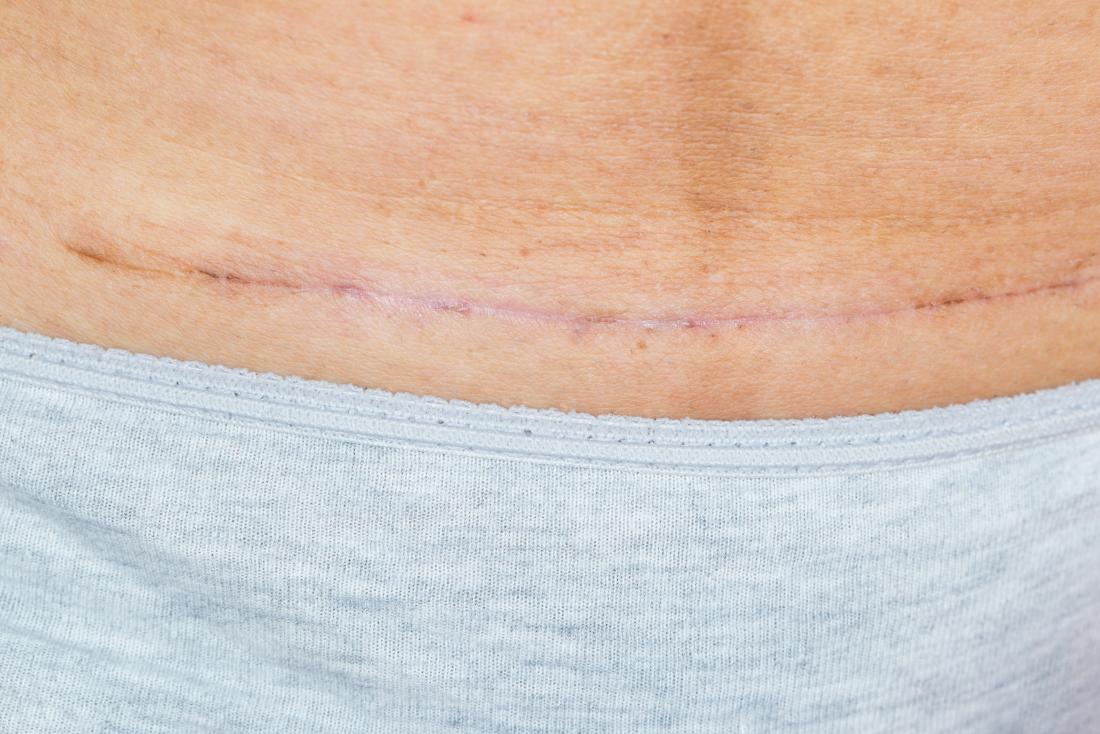Infections following a cesarean delivery, which some people call a C-section, are common. They occur in around 2–15 percent of all C-section surgeries.
The wound coming into contact with bacteria or other harmful microbes is a common cause of these infections. Different causes can lead to different types of infection, such as cellulitis or urinary tract infections.
This article will discuss signs of C-section wound infections, as well as some prevention tips.
Signs

Although wound infection is common, there are ways to help prevent infection following a C-section.
After a C-section, it is normal to experience some swelling, redness, and pain around the wound.
In some cases, clear fluid may also seep out of the wound.
However, with wound infections, these symptoms increase in intensity.
Signs and symptoms to look out for include:
- abnormal swelling, redness, and pain around the wound
- clear or discolored fluid coming from the wound
- abnormal vaginal bleeding
- pain or swelling in the legs
- abdominal discomfort
These symptoms may occur with fever-like symptoms such as:
- sweating
- temperature over 100.4°F (38°C)
- headache
- chills
- loss of appetite
- dehydration
- fatigue
- muscle aches
- difficulty concentrating
Signs of infection may not show up immediately after surgery. It can take up to 30 days for symptoms to develop. If symptoms do develop, it is important to see a doctor as soon as possible for guidance on the best treatment.
Diagnosis
Diagnosing a C-section wound infection is fairly straightforward. A doctor will first try to determine the presence and severity of an infection through a physical examination. They will then examine the wound and ask about the presence of fever-like symptoms.
Further tests may be necessary to determine the type of infection and most suitable treatment. This will usually require taking a sample from the wound and sending it to a laboratory for analysis.
The results of these tests can provide information about the infection, such as the type of microbes causing it. This information will help a doctor decide how to treat the condition.
Causes

Hypertension can increase the risk of C-section wound infections.
Harmful microbes coming into contact with the C-section wound cause the infection.
The bacterium Staphylococcus aureus is the most common microbe to cause C-section wound infections.
Other common types of bacteria that can cause the infection include Enterococcus and Escherichia coli. Antibiotic medications are the usual treatment for bacterial infections.
The infection can be incisional, or it can be an organ or space infection.
Incisional infections affect the wound site itself, either in the skin or the deeper tissues around the wound. Cellulitis is an example of an incisional infection.
Organ and space infections occur when the microbes reach the surrounding areas and organs, such as the bladder or urinary tract.
Certain factors increase the risk of experiencing a C-section wound infection. These include:
- obesity
- age
- living in rural areas
- diabetes
- hypertensive disorders
- twin pregnancy
- a greater number of vaginal inspections
- longer periods of labor
- epidural use
- recurrent pregnancy loss
There are also factors relating to the C-section surgery itself that can raise the risk of infection, such as a longer surgery time.
Antimicrobial prophylaxis is a medication that doctors once prescribed following C-sections. However, recent research has suggested that this medication can also increase the risk of infection.
Prevention

It is best to avoid swimming pools and hot tubs to prevent infection.
There are several factors that can help reduce the risk of a C-section wound infection.
Before surgery, these include:
- maintaining a healthy weight
- keeping blood sugar levels stable
- not smoking
Factors to prevent infection after surgery include:
- keeping the wound clean with soap and warm water
- covering the wound for as long as the doctor advises
- avoiding baths, hot tubs, and swimming pools
- adhering to any prescribed courses of medication
- not wearing tight-fitting clothes
Outlook
C-section wound infections are not uncommon. They occur when harmful microbes, such as the bacterium S. aureus, reach the wound site.
These infections are typically straightforward to treat with antibiotics. Recovery times may vary depending on different factors, such as the severity of the infection.
It is, however, possible to reduce the risk of infection by maintaining a healthful lifestyle before the surgery. Following the surgery, it is best to avoid exposing the wound to unsterile environments and keep it clean to avoid infections.

